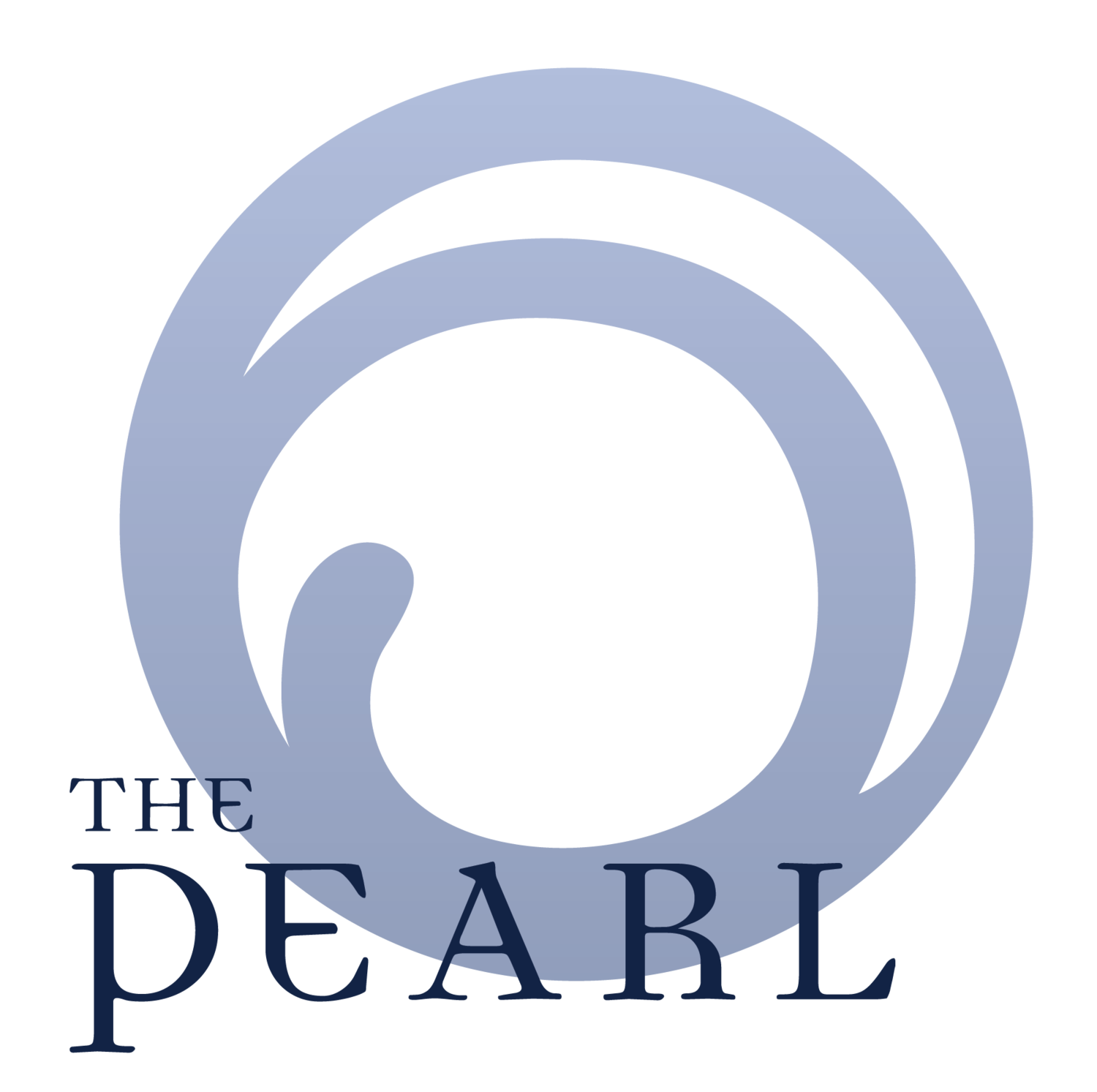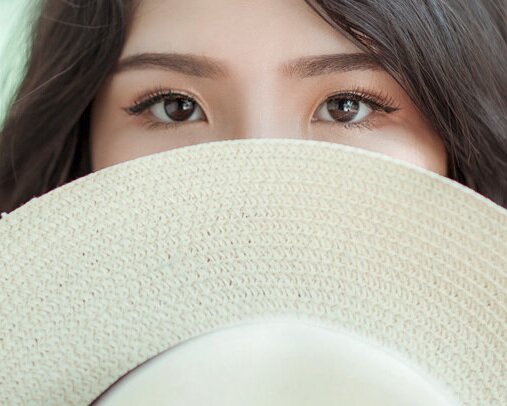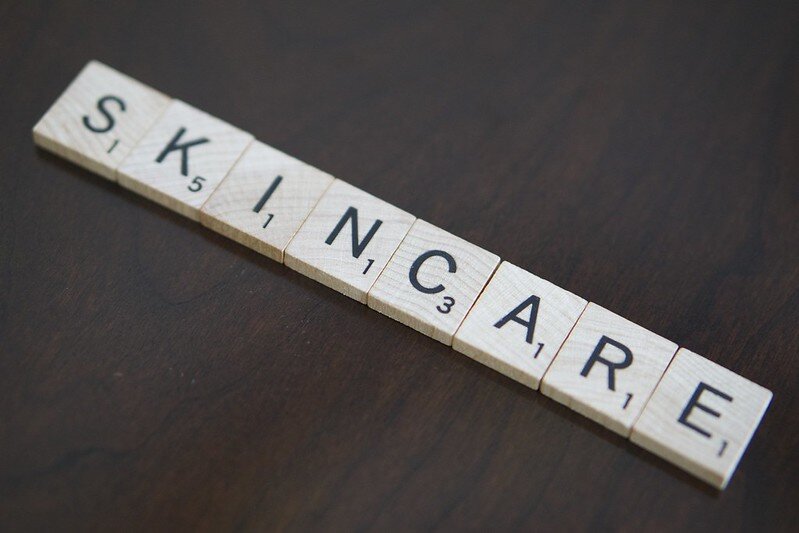12 Holy Grail Drugstore Skincare Products
You enjoy coming in for the occasional (or even regular) facial, but your pocketbook can’t necessarily afford premium home care products.
You still care about your skin, but you need to do it on a budget.
Read on below for our 12 favorite drugstore skincare picks!
A note about these products: you’ll see that most of them are fragrance free (this is not the same as unscented products, which can contain masking fragrances to cover up the smells of their ingredients). Fragrance free products have a lot of benefits. Many people, even those without sensitive skin, can have reactions to fragrances in skincare products. Drugstore level products may sometimes also use cheaper ingredients for fragrance that can cause more irritation than those in higher level products. When shopping at the drugstore, it’s better to stay fragrance free!
A few terms to know
Humectant:
A humectant is a substance which binds water to itself. In skincare, humectants can pull moisture from the air in your environment or from other layers of your skin to keep the skin surface hydrated. A popular and effective natural (despite sounding very unnatural) humectant is hyaluronic acid.
Emollient:
An emollient is a skincare ingredient aimed at smoothing the skin. Plant oils (such as shea butter, olive oil, etc.), waxes, and lanolin are all emollients. Emollients fill the spaces between dead skin cells, giving your skin a smoother feel with more even texture.
Occlusive:
An occlusive is an ingredient or combination of ingredients which “seal” the skin to lock in moisture and prevent water loss from the skin. Since occlusives sit on the skin, look out for occlusives which may clog pores if you are prone to acne or breakouts. A common occlusive ingredient which generally does not clog pores is petrolatum.
Ceramides:
Ceramides already exist in our skin but are also ingredients in some skincare products. Ceramides are lipids (fats) that form our natural protective skin barrier.
Non-comedogenic:
A comedone is a blocked pore. Products which are non-comedogenic will not generally contribute to blocking your pores.
You’ll notice a theme here of focusing on hydration and respecting the skin barrier (the layer of goodies that protects your skin). Even acneic and oily skin craves hydration. You’ll find that focusing on hydration can solve many skincare problems such as uneven tone, dullness, excessive oiliness, poor texture, poor elasticity, and fine lines & wrinkles.
Since it’s the beginning of any skincare regimen, we will start with cleansers. Contrary to popular belief, aggressive cleansers that break down your skin barrier and remove all traces of oil can be irritating to sensitive skin and can actually lead to breakouts in acne-prone skin. It’s generally best to use the gentlest cleanser that still works for your skin type.
1) Hada Labo Gokujun Cleansing Oil
While you probably won’t find this in a drugstore in the states, Hada Labo is a very common drugstore brand in Japan (you can easily find it online). If you’re unfamiliar with the double cleanse process, you apply an oil or cream to dry skin, massage it in, then apply a regular cleanser on top. Since many products we use on our skin (especially makeup as well as our skin’s natural oils) dissolve better in oil, stick to the adage of “like dissolves like” by starting with a cleansing oil. This one two punch of a cleansing oil or balm plus a gentle cleanser on top easily removes makeup, dissolves dirt and excess sebum, and does so without stripping your skin—the massage and lymphatic drainage that happens here are also great additions to your skincare regimen. The 16 oz bottle of this product will last a long time even when used every day in your skincare routine. It can be purchased for $16-$18.
2) CeraVe Hydrating Cleanser
This super gentle cleanser ticks a lot of boxes. It contains ceramides, is fragrance-free, paraben-free, non-comedogenic, and is suitable for even very sensitive skin. A 16 oz. bottle can be purchased for less than $15 and will last for months. The cleanser is pretty rich, so it may not be your favorite if you’re expecting oodles of foam and a cleanser that leaves you squeaky clean.
3) CeraVe Foaming Facial Cleanser
This cleanser has a lot of similarities to the one above, but it provides a bit more foaminess than the hydrating cleanser. While the hydrating cleanser is intended for normal to dry skin, the foaming cleanser is better suited for normal to oily skin. If you prefer a less rich cleanser, this can be a great option that’s still gentle, contains ceramides, and doesn’t damage the skin barrier. Even if you prefer a more foamy cleanser, it’s important to note that skincare regimens that contain harsh products (such as products aimed at oily skin) can actually backfire, causing skin to become irritated and retaliate. Similar to the above, a large 16 oz. bottle will set you back about $15.
4) Lo Roche-Posay Effaclar Medicated Acne Face Wash
If you tend toward oiliness and breakouts, a product with a BHA (beta hydroxy acid) such as salicylic acid can help keep breakouts at bay. This cleanser contains 2% salicylic acid. It is paraben-free, fragrance free, and oil-free. A good way to incorporate a BHA into your skincare regimen is to use it as your morning wash. Since you’ve (hopefully) washed your face the night before, you won’t really need to do a heavy cleanse in the morning (many people just rinse their face with lukewarm water in the morning IF they’ve performed their skincare regimen the night prior). You can simply apply the product, give it a few minutes of contact time, rinse, and carry on with the rest of your skincare regimen. The reason for recommending it as an AM product is that many people apply an AHA (alpha hydoxy acid) product at night for anti-aging. Cleansing with a BHA then applying an AHA can be quite irritating to the skin. You can find this product for about $15.
5) Acne Free Sulfur Mask
Sulfur is an often overlooked active ingredient when it comes to acne. This mask contains 3.5% sulfur. Sulfur can be an excellent addition to your skincare regimen if you tend to be on the sensitive side and react strongly to the more aggressive active ingredients such as benzoyl peroxide, salicylic acid, or AHAs. You can find this mask at most retailers (CVS, WalMart, Walgreen’s) for around $10 or less. You can use this mask weekly for an all-over treatment, or you can spot treat pimples and sleep with the mask on them overnight.
6) Neutrogena Hydro Boost Gel Creme with Hyaluronic Acid for Extra Dry Skin
An important part of any skincare regimen is a humectant (see above) product. A good double cleanse, a humectant, an occlusive, and a good sunscreen can make up a basic but very effective skincare regimen. This product contains hyaluronic acid, an effective natural humectant. It’s also fragrance-free and gel-based, so if you’re a person who is phobic of putting anything heavy on your skin, this is a great product for you.
7) VaniCream Moisturizer
VaniCream is a very simple but very effective occlusive. Despite what you may have heard previously, it’s a GOOD thing to have ingredients in your moisturizers that do not absorb into your skin. There have been many skincare “revolutions” over the years that have claimed products your skin can’t absorb are not good for you. Do your own research, but, depending on your specific skin needs, occlusive ingredients that your skin does not absorb are vital to heal various conditions and prevent water loss in the skin. If you prefer a richer moisturizer, original VaniCream is a good option. If you want something lighter consider VaniCream lite. All the options are fragrance free, paraben-free, lanolin-free, formaldehyde-free, non-comedogenic, and vegan. This product can be used on the entire body, including the face. VaniCream can be found in most drugstores for less than $15.
8) CeraVe Moisturizing Cream
CeraVe moisturizing cream is of a similar consistency to VaniCream and also acts as an occlusive, but it does contain some additional ingredients that may be beneficial, namely, ceramides and hyaluronic acid. This product is slightly lighter than the original VaniCream and spreads a bit more easily. It DOES contain parabens as a preservative, so if you’re trying to stay paraben-free, you might want to opt for a different cream. CeraVe also makes a lighter lotion-like option in the form of CeraVe Daily Moisturizing Lotion. A large tub of the cream is usually $18-20, with the daily moisture product being about $12. Both products are intended for the body and face.
If you had to pick just one product to keep in your skincare regimen, it should be a sunscreen. When it comes to anti-aging benefits, sunscreen beats just about any other product in the skincare world. Sunscreens are technically divided into two categories: sunscreen and sunblock. Sunscreens use chemical filters while sunblocks use physical filters in the form of minerals—many products contain both. Look for broad-spectrum protection of at least SPF 30. If you are sensitive, a mineral sunblock may be a better option than a chemical sunscreen. Some sunscreens can leave a white cast on the skin, may pill on the skin, and can be greasy. The three we recommend below will leave very minimal cast, do not pill, and should not leave you feeling greasy.
9) La Roche-Posay Anthelios Tinted Mineral Ultra-Light Fluid Broad Spectrum SPF 50
A broad spectrum sunscreen coming in at SPF 50, this contains mineral sunscreens in a mineral tinted base. A tinted base can help reduce the potential white cast that some sunscreens leave behind. Even if the tint of the product doesn’t match your skin tone, you shouldn’t have any issues with it blending in as it is very sheer. This product comes in at the most expensive on our list at around $33. It’s a little pricey (especially for a sunscreen) but if you want to skimp on something, don’t skimp on your sunscreen! Most people don’t apply a thick enough layer of sunscreen, so be sure to get a good amount all over your face, neck (front and back), chest, and ears. It’s recommended that you re-apply sunscreen once or twice throughout your day for continued protection from the sun’s rays.
10) Biore UV Aqua Rich Watery Essence Sunscreen SPF50
Another international brand that you probably won’t find in drugstores here, it’s still worth mentioning because of the fantastic price point and downright cult following this product has. Although you probably won’t find it on shelves in a store near you, it can easily be found online for less than $10. Since it doesn’t contain any mineral sunblocks, it can have a very light texture and leaves no cast whatsoever. One downside, this product is NOT fragrance free but does have a nice light citrus fragrance. You can find this product for less than $10.
11) CeraVe Facial Moisturizing Lotion AM SPF 30
This product is a broad spectrum SPF 30 that contains both chemical and mineral filters. Though it does contain zinc oxide, the zinc in this product is micronized and blends easily into your skin after application. It also contains niacinamide, ceramides, hyaluronic acid, and is non-comedogenic. It’s light in texture and covers all your bases in terms of sun protection. Thought it is marketed as a moisturizer with sunscreen, you’d be wise to apply this over the top of your moisturizer as it’s not the best occlusive. You can find this product for $15-$19 depending on your retail outlet.
12) Differin Adapalene 0.1% Acne Treatment Gel
Wait, wait, wait! Before you scroll over this because you don’t have acne… this product isn’t just for acne. The active ingredient in Differin (adapalene) is in a newer generation of retinoid active ingredients. If you’re familiar with Retin-A (generic, tretinoin), this product is in a similar family of active ingredients. Retinoids are a family of ingredients derived from Vitamin A. These products work by causing an increase in cell turnover, forcing your skin to produce new skin and collagen at a faster rate. When it comes to anti-aging properties, products in this family do more than just about any fancy cream out there on the market, all for a much lower pricepoint. All retinoids tend to be quite irritating to the skin when you first start using them, so it’s important that you ramp up their usage over time. It’s recommended that you start with one application per week and work your way up from there (2x week, 3x week, etc.) to acclimate your skin to the product. If you don’t respect the ramp-up timeline, your skin will retaliate in the form of red, irritated, flaky skin, and you’re much more likely to discontinue use of the product, which is IMPORTANT—the best results happen after several months of continuous use. A good way to minimize irritation is to apply your moisturizer, let the skin dry, then apply the product. Applying retinoids to wet skin can increase the possibility for irritation. This product retails for about $12-$15.
We’ll wrap up today’s post with a no-nonsense skincare routine
1) At the end of your day, apply a cleansing oil or balm to DRY skin. Massage it in well to dissolve dirt, oil, and makeup. Apply your regular cleanser over the top, massage it in, then add lukewarm water, massage in your cleanser, and rinse your face well (also with lukewarm water). Water alone is an irritant to the skin, but water with an extreme temperature, even more so.
2) If you aren’t using a cleansing oil, you can go right to this step. Apply your cleanser to dry skin. Applying it to dry skin will give you a little more tackiness which can help emulsify impurities on your skin. Add lukewarm water, massage into the skin, then rinse with lukewarm water. Remember that foam and bubbles don’t mean clean—ingredients are usually added to cleansers just to make them foam because we tend to think lather=clean.
3) Do NOT dry your face. You’ve just spent a few minutes infusing your skin with water, so now you want to trap it all in your skin. Apply your humectant or serum if using, then apply your occlusive over the top. It’ll feel pretty slippery and weird until you get used to this approach.
4) Let the face dry for a couple minutes, then apply your retinoids on top.
5) In the morning you can simply rinse your face with warm water. Cleansing again is more than likely just going to irritate your skin than bring any benefit. If you’re using a treatment-based cleanser (such as the Effaclar above), you can add that in to your AM routine, wait a few minutes to give the medication contact time, then rinse and follow the same steps above.
5) Sunscreen! You only need apply sunscreen during the day. After your occlusive, apply a good layer of sunscreen all over your face, neck (front and back), ears, and upper chest. You should also apply a sunscreen to any areas of your body that are exposed, but you can choose a body-specific sunscreen for that application (they’re usually a bit cheaper).
You can perform any of the above steps in the shower, the key with your moisturizer is to get in on your skin ASAP. In as little time as just a couple minutes, you lose the moisture in your skin, so grease up, baby!
Though it sounds like a lot, when you get into the habit of it, the whole routine should take you only about 5-10 minutes total per day—a small price to pay for great skin.














Can you believe the holidays are already here? Ahhhh! Every year it feels like time hits fast-forward. Between work, home, and the general chaos of life, it can feel impossible to squeeze in one more thing—let alone all the holiday extras. And if your to-do list is already unrolling off the desk like a cartoon scroll… same.